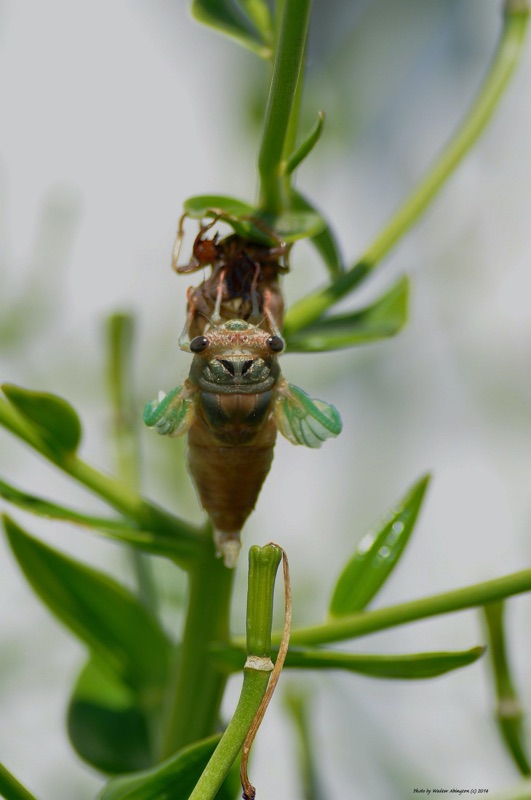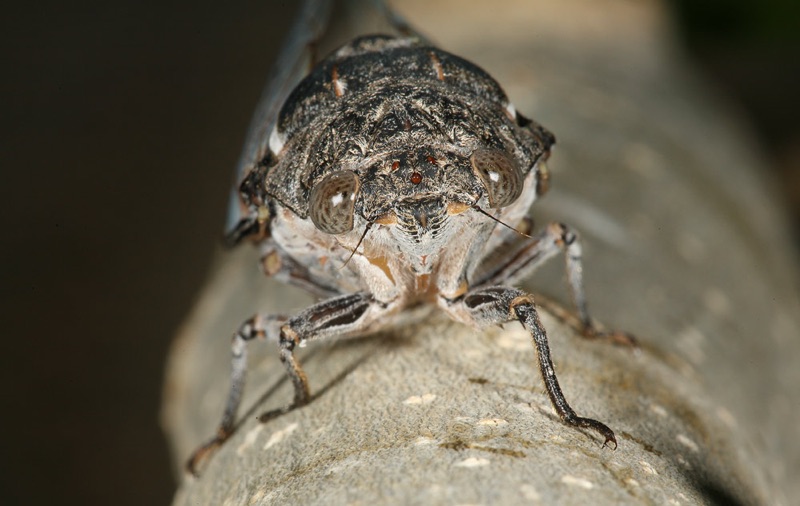Mid-August is approaching, and the “Dog Days” of summer are almost here. Sirius (the Dog Star) and the constellation Canis Major will soon begin to appear in the early morning sky. Now is also the time that Tibicen canicularis, the Dog Day Day cicada, is also making its presence known in the U.S.A.
Edit: Dog-day cicadas (Neotibicen) are named for the time of year when the Dog-start Sirius first appears in the sky. Depending on where you are in the U.S., latitudinally speaking, Sirius should enter the pre-dawn sky between July 29th (Key West, FL) and August 15th (Bangor Maine) give or take a day.
This is a photo of a N. canicularis (Dog Day cicada) next to a T. davisi (Southern Dog Day cicada) by by Paul Krombholz:

N. canicularis has a green pronotal collar, green markings on its pronotum, and at least some, if not all, orange colors on its mesonotum (where the M is on the cicada’s back). N. canicularis sounds like (to me at least) a circular saw buzzing through a plank in wood in a neighbor’s garage.
Imagine that you are a farmer waking just before dawn and seeing the first signs of Sirius, the Dog Star, and then later in the day, hearing N. canicularis singing away in the trees surrounding your fields. Those two signs signal that summer is reaching its peak, and harvest will start soon enough.
N. canicularis can be found in the following states and provinces: AR, CT, DC, IL, IN, IA, KS, ME, MB, MD, MA, MI, MN, MO, NE, NB, NH, NJ, NY, NC, ND, NS, OH, ON, PA, PE, QC, RI, SC, SD, TN, VT, VA, WV, WI.
Here is a screen capture of the computer app Stellarium, with Canis Major and Sirius rising above the horizon before dawn.

If you’re interested in stars, check out Stellarium. It is free.
Visit the Songs of Insects site for a nice photo and sound file of the Dog Day cicada. Also by their book Songs of Insects – it is inexpensive and comes with a CD.

























